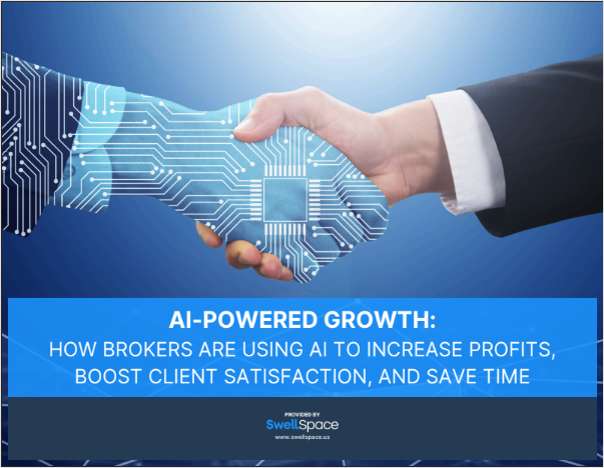You might argue that Benefitfocus is a 14-year overnight success story.
Shawn Jenkins does.
When Jenkins, along with Mason Holland, founded the company back in 2000—setting up shop in an abandoned Walmart building in Charleston, S.C.—he quietly began revolutionizing the benefits industry through the company's cloud-based technology.
They founded Benefitfocus on a simple premise.
“Our idea was simply — and still is — that it ought to be easy for an employer to manage all their benefits — all types of benefits — in one place through technology. … We thought the employee and their families should be able to understand those benefits and get multiple ways of communication,” says Jenkins, the company's CEO and president. “We set out to build a better way. And we built a web-based software platform for electronic enrollment and eligibility management.”
Simply put, Benefitfocus aimed to take the “administrative clunkiness” out of benefits. They wanted to make it easy, they wanted to make it mobile, and they wanted to make it fun.
They picked up some customers, got some attention from carriers and employers, and gained a small foothold. But for years, most people, Jenkins admits, still hadn't heard of Benefitfocus. The founders hung around, knowing they had a good concept, and the company gradually grew.
Then things got more complex. The Patient Protection and Affordable Care Act was getting off the ground, voluntary benefits were the talk of the industry, and exchanges became part of the picture. More people were confused and frustrated with the way things were going.
And that's when things got good for Benefitfocus. People were looking for ways to manage all the complexity using technology, Jenkins explains. And his company was eager to help.
“The additional complexity, the compliance, the constant changing and churning of the rules [in PPACA] is kind of tailor-made for technology,” Jenkins, 46, says. “It's been a big tail wind for us.”
“We're one of these success stories where we were quietly doing the work and building the infrastructure on the products and the market kind of lined up for us, and it's been great. We've grown exceptionally well and we're just proud,” he says. “As a founder, it's been fun to build a great team, a great culture, and solve a big, big problem.”
Success, after that, came fast: In 2013, after approaching nearly $100 million in revenue, Benefitfocus went public (it's under the ticker BNFT) and profits surged. Today, Benefitfocus has four other offices—in San Francisco; Jenks, Okla.; Greenville, S.C.; and Hyderabad, India—in addition to its 40-acre campus in Charleston. The company has more than 1,000 associates. And 23 million people now belong up in the (Benefitfocus) cloud.
How it works
Benefitfocus offers its clients a cloud-based subscription service to help them manage and streamline their benefits plans, and in so doing, has become one of the largest benefits software companies in the United States. It offers two basic products — one for employers (among the company's clients are Under Armour, New Balance, Dannon, Triumph Foods and Brooks Brothers) and one for carriers (it works with Prudential, MetLife, UnitedHealth and more than 30 BlueCross partners, among others).
Electronic billing, enrollment, sales and access to informative videos, health news and tips are all part of the Benefitfocus platform, which Jenkins describes as the “Apple version” of benefits. The company gives consumers the opportunity to manage their benefits in one place, on a computer or a mobile device, much like they would with their music library.
“The platform is really similar to the Apple App Store or the Android store; and we're kind of a laboratory ourselves — we have multiple health plan options, dental, vision, critical illness, LifeLock, an array of other products,” Jenkins says.
What makes Benefitfocus different than other benefits software, he says, is that it puts voluntary products at the forefront during enrollment.
“As I enrolled myself this last year for my family, as soon as I selected my health plan — I selected a high- deductible health plan, and it automatically recommended Allstate's critical illness plan to help fill in some of the gaps — so I selected that and continued on with the rest of my enrollment.”
The fact that the platform offers more than just a couple of health plan options is part of its success. Jenkins cites the importance of voluntary benefits for all parties involved — employers, brokers, carriers and consumers.
“We've taken voluntary benefits from kind of a sideshow and woven them directly through our recommendation and put them right at the point where people are making those critical decisions,” Jenkins says. “We can explain it through video — we have great videos that explain the capability. We are seeing incredible increased participation in these programs because of the ability to make it seamless. A lot of it has to do with technology that is making it seamless.”
Technology, of course, is the company's central theme. Jenkins talks a lot about the company's “fantastic software” and its investment in engineering and product development. Benefitfocus does four major software releases a year.
“Every 90 days we're updating the platform for new regulations, new benefits support, new user experience capability — the market looks at how they can modernize their benefits platforms,” Jenkins says.
That technology, says April Floyd, benefits manager at Under Armour in Baltimore, has allowed her company to streamline communications to all employees by getting them more involved.
“My benefits team has elevated drastically since we no longer have to spend time helping our many teammates make benefit elections and changes nor do we have to answer day-to day-questions. Teammates can do it independently,” she says.
“We may pay a lot of money for our employees' benefits but if they don't know about them, then it's not really a value. We want to make sure they understand how rich their benefits are,” Floyd says.
Frankly, technology is a long time coming for the benefits industry, Jenkins says.
“In other industries, we've certainly seen technology come through — whether it's the music industry or the travel industry,” Jenkins says. “But the benefits industry is much bigger than the music industry or air travel — so it's taking longer. But it's vital. You need to be on the right side of the technology equation.”
'All in this together'
Besides technology, another aspect that sets Benefitfocus apart is the fact that it's finding success embracing regulatory changes instead of running from them. Not to say it's not a challenge.
“The Affordable Care Act is a big tail wind for us,” Jenkins says. “It wasn't necessary for our growth —benefits administration was ready for cloud-based technology, so that was happening anyway — but the right technology platforms that can adapt to those changes can further help the customer base.
“As the market looks at how they can modernize their benefits platforms from the carrier, employer or broker standpoint, they realize they need a flexible tool that's constantly improving, and the more regulation, the more confusing it is, it helps our business,” he says. “It's a big thing to keep up with.”

Brokers are also a vital piece of the puzzle. And they're increasingly choosing to work with the platform, Jenkins says.
“An employer wants an array of benefits — they want a platform. As an independent broker, it may be difficult to invest tens of millions of dollars to invest in relevant technology in the cloud. What these brokers are finding is, with Benefitfocus, they can use us and they're able to offer more than just two or three benefits—they can offer six or eight or 10, maybe more,” Jenkins says. “And they're finding that the employer is appreciative because the benefits administration costs are lower, the bills are accurate, and, more importantly for the broker, they are able to sell more products.”
Cheri Warnick, account manager for brokerage firm Benefits Controls of the Carolinas Inc., in Charlotte, N.C., says using that technology helps ease some of the increased workload she and other brokers at her firm have experienced due to PPACA.
“Benefitfocus has helped us as a broker build stronger relationships with our clients,” Warnick says. “It has taken workload off of the client at marketing time. And it is easier for us to assist with enrollment, COBRA and employee notices.”
Looking ahead
It's safe to argue that Benefitfocus is indicative of changes happening in the benefits business: The insurance industry spent an estimated $55 billion last year on software services, and companies are relying more and more on technology as PPACA takes effect. Private exchanges — booming right now — are often run by companies such as Benefitfocus.
It's an opportunity Jenkins says is under-penetrated. Their competitors, he says are mostly internal legacy tech projects.
“We're mostly replacing a 10-year-old way of doing things,” he says.
Jory Delibac, benefits and retirement manager at the Dannon Co., in White Plains, N.Y., says Benefitfocus is revolutionary in the benefits world.
“The thought of having one platform that captured everything to do with benefits would have never occurred to me,” she says. “This will be the model for all other benefit platforms going forward if they want to stay competitive in the market.”
As Jenkins sees it, the future of the industry can be summed up in two words: Technology and consumerism. Of course, he's investing heavily in both.
The real value in technology — mobile technology, in particular — Jenkins explains, is its “ability to consumerize these benefits products. And that consumerism will be the massive, massive theme for our industry.”
“It's a term that's been around for a while, but we're really seeing it now, whether it's playing out in the private exchange marketplace or with employers involved,” he says. “The idea of consumers needing relevant tools on their phone or on the web, understanding data, getting involved. All this drives growth in product selling, for brokers, for carriers and it helps employers and consumers.”
“Benefits is the real topic now — it's our day.”
Complete your profile to continue reading and get FREE access to BenefitsPRO, part of your ALM digital membership.
Your access to unlimited BenefitsPRO content isn’t changing.
Once you are an ALM digital member, you’ll receive:
- Breaking benefits news and analysis, on-site and via our newsletters and custom alerts
- Educational webcasts, white papers, and ebooks from industry thought leaders
- Critical converage of the property casualty insurance and financial advisory markets on our other ALM sites, PropertyCasualty360 and ThinkAdvisor
Already have an account? Sign In Now
© 2025 ALM Global, LLC, All Rights Reserved. Request academic re-use from www.copyright.com. All other uses, submit a request to [email protected]. For more information visit Asset & Logo Licensing.







